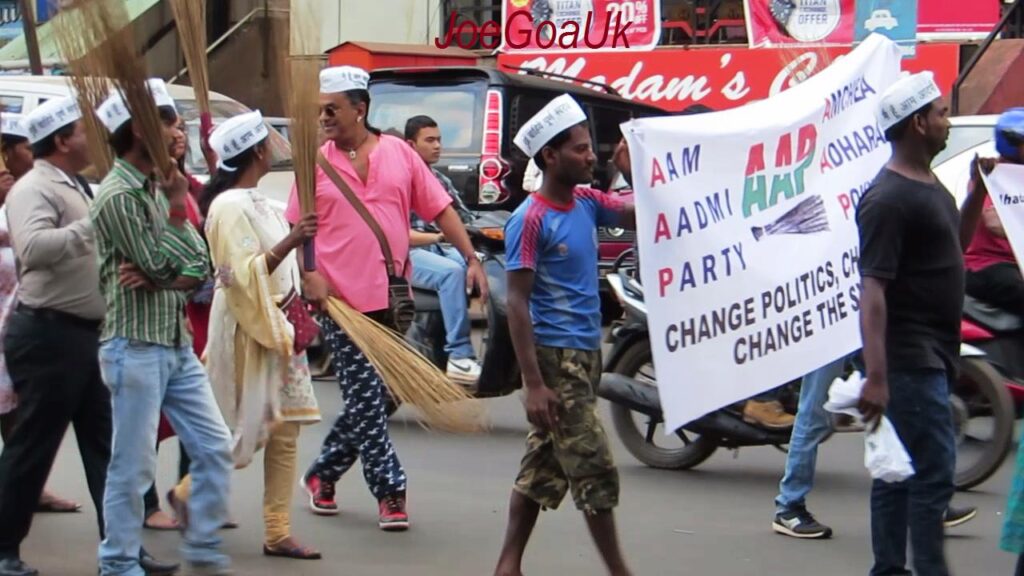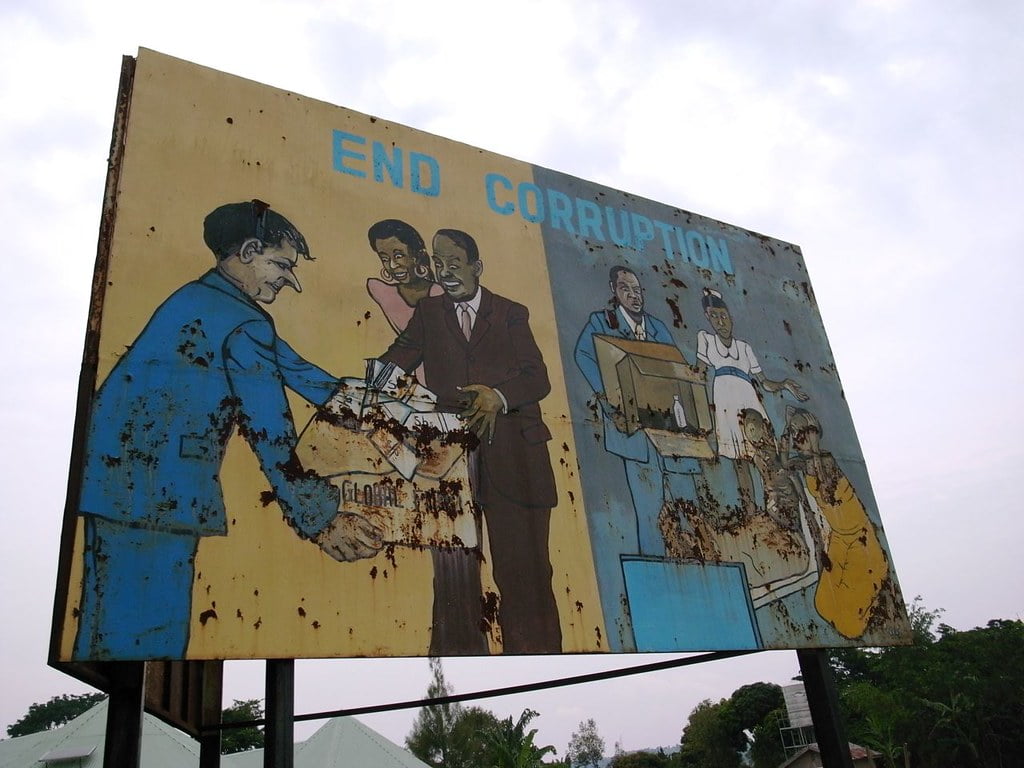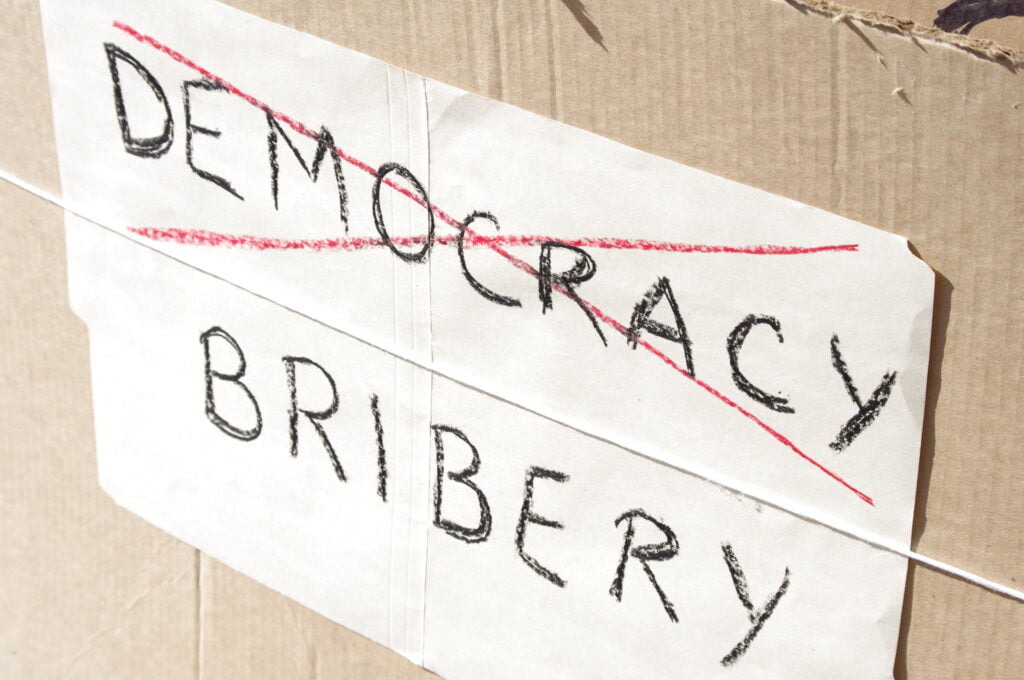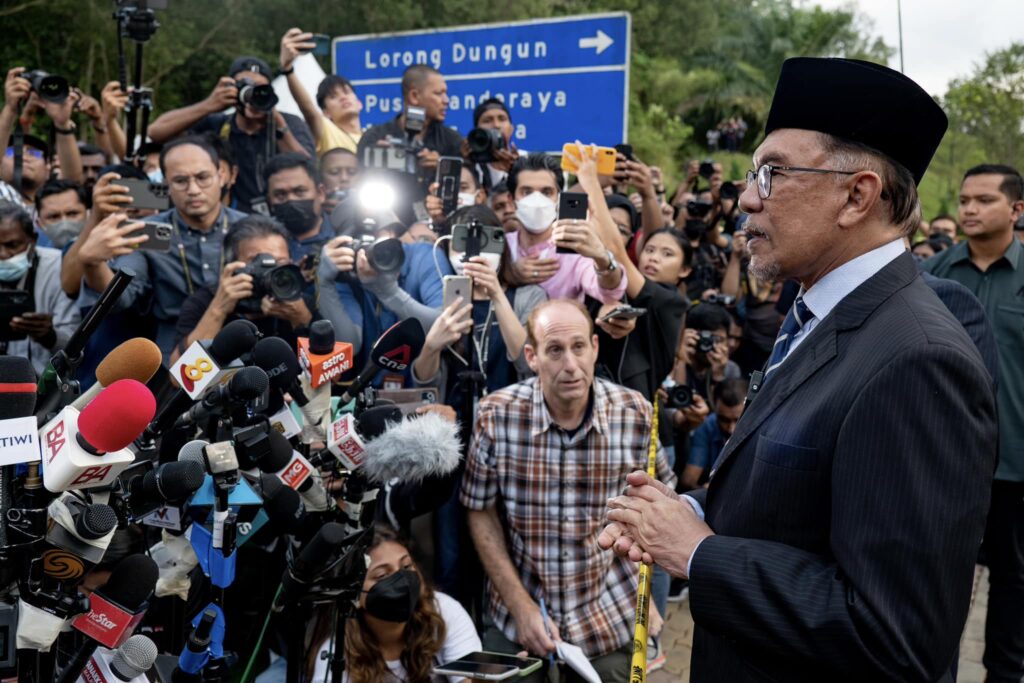The Aam Aadmi Party promised a corruption-free Punjab but it has not been able to deliver on its campaign promise.
 The Aam Aadmi Party wooed voters by promising to eliminate corruption. : Joegoauk Goa available on Flickr https://www.flickr.com/photos/95914901@N08/12541375474 CC BY 2.0
The Aam Aadmi Party wooed voters by promising to eliminate corruption. : Joegoauk Goa available on Flickr https://www.flickr.com/photos/95914901@N08/12541375474 CC BY 2.0
The Aam Aadmi Party promised a corruption-free Punjab but it has not been able to deliver on its campaign promise.
Winning government on the back of an anti-corruption platform has proved to be a double-edged sword for the Aam Aadmi Party in India’s Punjab state.
The Aam Aadmi Party, literally “Common Man’s Party”, emerged from an anti-corruption mass movement which itself was a reaction to a string of corruption scandals that plagued Indian politics in the early 2000s.
The party made its political debut in 2013 when it formed a 49-day alliance government in Delhi. It then swept the Delhi elections in 2015 and 2020. But its biggest and most surprising gain came in 2022 when it swept the legislative election in Punjab.
It lured voters with promises that were impossible (eliminating corruption from government in the first 20 days) and uneconomical (freebies and social security payments despite Punjab’s perilous finances). But not having any historical baggage in the state, it enjoyed a distinct advantage over traditional political parties like Congress, the Shiromani Akali Dal and the Bharatiya Janata party.
It’s no surprise the Aam Aadmi Party would have popular appeal. Voters were jaded by numerous scams and corruption cases, especially under the United Progressive Alliance government led by Prime Minister Manmohan Singh. A mass movement led by some NGOs under the umbrella of India Against Corruption quickly grew calling for improved legislation, such as an Ombudsman, at both federal and state levels. Civil servant-turned-activist Arvind Kejriwal then formed a political party to provide alternative politics based on corruption-free governance. That is how the Aam Aadmi Party came into being.
The question now is whether the party has lived up to people’s expectations on the issue of curbing corruption in Punjab.
A report by Transparency International India for 2019 revealed corruption was widespread in Punjab. It has been in the top ten states for corruption cases since 2019 and in 2021 it was placed eighth. Property registration and land issues contributed the most to corruption of government officials in Punjab in 2019. Police corruption took the top slot in 2018.
The Transparency International study rejected the role of changes to work practices and technology in reducing corruption. It also showed that despite the withdrawal of 500 rupee and 1000 rupee notes (to curb hoarding of black money) announced by the central government in 2016, cash bribes continued to be preferred by corrupt officials.
A National Crime Records Bureau report shows reported corruption cases in Punjab grew in 2021 by 13.2 percent after negative growth of 15.3 percent two years earlier. This coincided with a low conviction rate and a high proportion of pending anti-corruption cases in the courts.
The pre-election claims and post-election performance of the new administration in eradicating corruption have to be seen in this context.
In March 2022, an anti-corruption helpline was launched. The government has claimed more than 4000 complaints have been received so far, and over 200 arrests made. The administration also launched an investigation into the policies, projects and public schemes implemented by previous governments, apparently to unearth the corruption of its predecessors.
But only a few months into government, the Aam Aadmi administration has been accused of malpractice and incompetence. Several of its policies appear to be repackaging and rebranding of the old.
One example is the conversion of sewa kendras (service centres) into mohalla clinics (neighbourhood clinics). Sewa kendras were constructed in 2016 at the cost of 2 million rupees each during the Shiromani Akali Dal-Bharatiya Janata Party government’s tenure. They were closed in 2018 by the Congress government which succeeded it. Now the Aam Aadmi administration has converted 117 defunct sewa kendras into mohalla clinics by renovating them at the cost of 1.9 rupees million per building – virtually the original cost of construction. The party’s advertising spending has also come under scrutiny.
According to documents procured through the Right to Information Act, within the first two months of forming government, the Aam Aadmi Party spent 373.6 million rupees on advertisements tom-tomming its achievements. The government has also allegedly allowed the use of Punjab State funds for contesting elections in other states.
In the run-up to the Punjab election, it was accused of selling assembly poll tickets to political aspirants. After taking charge, the party was attacked for its apparently selective approach in weeding out corrupt party officials. Opposition leader Pratap Singh Bajwa questioned the Aam Aadmi Party’s attitude to legislator Fauja Singh Sarari’s involvement in corruption and extortion cases.
Shiromani Akali Dal president Sukhbir Singh Badal also demanded an inquiry into the party’s involvement in a 5000 million rupees excise-tax scam. A similar concern is shared by the social activists that the current government, like its predecessor, is holding back information on pending corruption cases against its party and government officials.
It would seem the Aam Aadmi Party’s focus has been largely on sting operations to uncover corruption in projects associated with previous state governments. These operations are then trumpeted on social media platforms and through full-page newspaper advertisements.
Meanwhile, corruption seems to have taken different forms. Political parties are being accused of selling poll tickets, thus corrupting the electoral process. Elections are being fought by offering freebies and making uneconomical promises, the extravagant use of public funds, delaying the prosecution of the corrupt and a selective approach to punishing and weeding out corrupt government functionaries.
This not only affects voting behaviour but the financial system and the legal system as well. What the Aam Aadmi Party’s penchant for dramatics has done is to reveal a selective enforcement of its anti-corruption agenda at the cost of ignoring the preventive approach.
A preventive approach would require behavioural changes at the grass-roots level, transforming public institutions to make them transparent and accountable, changing the nature of people’s interaction with government agencies by automating the process and empowering citizens through various legislations such as the RTI Act and Public Services Guarantee Act.
There are signs the prevailing culture of corruption has neither disappeared nor abated. The enforcement strategies to curb corruption seem designed more to make an impact in the media while there has not been a visible reduction in the avenues of corruption.
Amit Kumar works as a Research Officer at Institute for Development and Communication, Chandigarh, India. His areas of specialisation include Gender and Masculinities studies, Social and Political Geography. The author declared no conflicts of interest in relation to this article.
Originally published under Creative Commons by 360info™.
Editors Note: In the story “Combatting corruption in democracies” sent at: 01/12/2022 09:34.
This is a corrected repeat.














